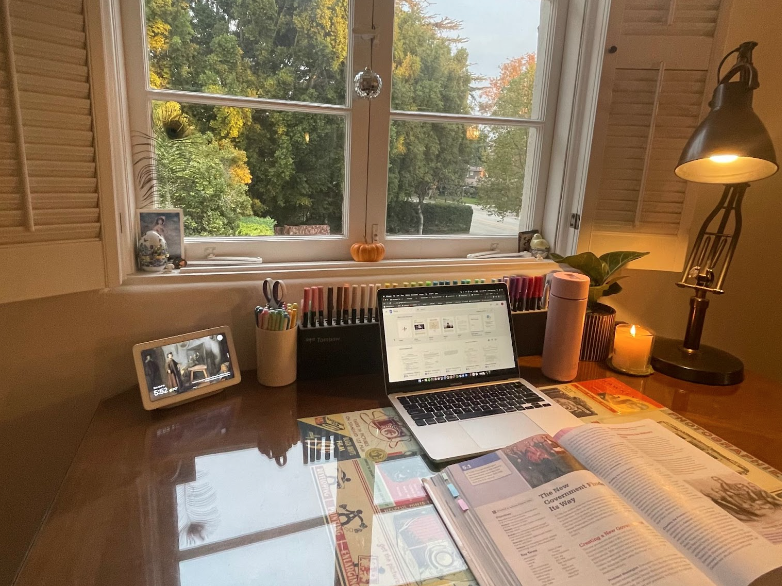Some think the hardest part of school is homework; others think it is quizzes and tests; I believe it is studying. Homework, quizzes, and tests almost always provide you with clear-cut directions and deadlines to ensure that you know exactly what is asked of you. However, studying has neither instructions nor due dates – in fact, it’s not even a requirement! Even so, many of us like to study to give us just a bit more preparation for our upcoming assignments.
Since there are so many different study methods and it’s difficult to know where to start, I’ve compiled a short list of some of the best scientifically-backed study tips to help you succeed this school year.
Blurting
Active recall is scientifically considered to be the most effective way to remember content, and blurting falls under its umbrella. I find blurting is particularly helpful for history classes where there are many important dates, people, and events to remember. To do the blurting technique, compile a list of key terms you need to remember. Then, using a color of your choice, define/describe each term to the best of your ability from memory, without looking at notes or a textbook. When you’re finished going through all of your terms, find any details from notes or your textbook that you missed and fill them in on your list in a different color. This will help you to identify the concepts you know and the concepts you need to review.
Flashcards
This is a popular one, and for a good reason. Flashcards, hand-made or online, are a good way to memorize foreign language terms quickly. If you choose to make flashcards by hand, you can use pictures to help assist you in actively recalling terms or concepts. To make flashcards for a foreign language class, write the term you need to memorize on one side of the paper and the definition/description on the other. You’ll learn new words in no time.
Leitner Boxes
If you do choose to make flashcards, it is better not to go through all of them every time you study, especially when you are trying to memorize a large list. German science journalist Sebastian Leitner created a spaced-repetition method that allows you to expedite the tedious process of studying while building your long term memory.
Let’s take a subject such as AP Calculus BC into consideration. For the AP Calculus BC exam, you are strongly encouraged to memorize 108 formulas by the time the AP exam rolls around. Rather than going through all 108 flashcards every time you study, the Leitner method leaves you with less work each time you study. To do the Leitner method, set aside three boxes/piles. For now, I will describe the process as if you are using boxes. Box 1 should be labeled “every day,” Box 2 should be labeled “every other day,” and Box 3 should be labeled “once a week.” All of the flashcards should start in Box 1. If you answer a flashcard correctly, move the flashcard into Box 2. If you answer a flashcard incorrectly, move it back into Box 1. When you are finished going through your flashcards, you will likely have some in Box 1 and Box 2 – you can review the Box 1 flashcards the next day and the Box 2 flashcards in two days. When you review the Box 2 flashcards again, place any you got wrong back into Box 1. Any you got right can be placed into Box 3, where you will review them in a week. Continue to place any flashcards you answer incorrectly from Box 3 into Box 1. Before you know it, all of your flashcards will be in Box 3 and therefore in your long term memory.
The Feynman Technique
To quote Richard Feynman, “if you cannot explain something in simple terms, you don’t understand it.” The Feynman Technique, created by nobel-prize winning physicist Richard Feynman, is an oral way to remember any type of information. To practice The Feynman Technique, explain a concept to someone who has no knowledge of the subject. Explaining a difficult concept in simple terms to someone else will allow you to identify your areas of weakness. Do they understand what you are trying to communicate? Do you understand the concept enough to articulate your ideas clearly? This is especially helpful for subjects like math and biology that often have step-by-step processes involved in free response questions which, while complicated, can be made easier by breaking down concepts into smaller, more simple pieces.
Interleaving
Interleaving is the process of taking problems from different units or concepts within a subject, mixing them up, and solving them for practice. It is particularly useful for STEM subjects and in preparation for final exams where you need to know everything you have learned throughout the year. Interleaving helps your brain make connections across topics that inevitably leads to a better, more holistic understanding of material.
These are just a few of the study techniques that have worked for me throughout high school. Studying is not a one-size-fits-all, but hopefully at least one of these techniques works for you!



